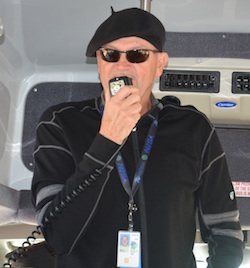I recently had the opportunity to spend some time at the Los Alamos National Laboratory (LANL). While the federal lab’s main mission is military defense, many innovations can be reimagined to work well in agriculture. To learn more about going from the lab to the field, I spoke with John Mott, technical writer for LANL.
Mott first started at LANL in 1988 when he arrived as a post doc in the life science division – his background is in neuroscience. After a brief hiatus he came back as a technical writer. “My job is to move innovations developed in the laboratory into the marketplace.”
 His current role is to manage intellectual property estates and work with patent attorneys to take innovations and protect them in the proper way. Then he manages those innovations through their patent and copyright processes. So how exactly does this process work?
His current role is to manage intellectual property estates and work with patent attorneys to take innovations and protect them in the proper way. Then he manages those innovations through their patent and copyright processes. So how exactly does this process work?
“Once we’ve established a patent position whether it is a patent application or an issued patent then we look to find partners for that. We work with companies large and small such as Verdesian,” explained Mott. “The transfer of the right to use the patent is called a license. With that generally comes a financial stream back to the laboratory. As the company gets the product onto the market we get a royalty on sales.”
Thirty-five percent of those funds are given to the inventor as an incentive to work with the company holding the license to help make the produce successful and the rest is used by the laboratory for new R & D projects to support, what they call ‘technology maturation’. “Food security is part of our national defense mission so working with companies like Verdesian is part of our mission,” said Mott.
Mott noted that the first product they worked with Verdesian on was their Take-Off product and there will be forthcoming announcement on the next generation of the product soon.
To learn more about how LANL innovations go commercial, listen to my interview with John Mott: Interview with John Mott, LANL
